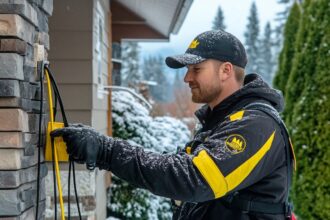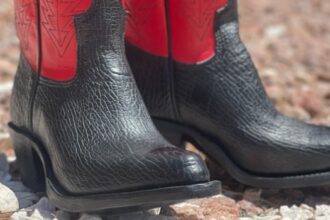Necessary for a safe, successful trek to Everest Base Camp is the skill and knowledge of a Sherpa. Nor is the trek to Everest a mere scenic experience or just a statement of personal achievement, but it demands physical endurance, strong mettle, and acclimatization. A sherpa guide swings everything around to his perspective with years of experience and a thorough understanding of the terrain. It may be said that at high altitudes, Sherpas are able to catch one ’s breath most importantly because they are so well-versed in acclimatization. Climbers are struggling as they ascend higher and higher to cope with decreased levels of oxygen. Sherpas advises climbers on the rate of ascent which is best for acclimatization, in order to get enough rest and hydration. This makes their suffering from acute mountain sickness less severe. They know just when to have a rest, just when to press on, so that acclimatizing goes gradually for the trekker to adjust as he wills it up to altitude without having his body thus overwhelmed. For a trek to Everest sophisticated skill is necessary. The way is rugged; there are steep climbs on rock-strewn trails and unpredictable weather conditions. The Superb navigational skills of Sherpas help trekkers avoid dangerous areas and get on the safest way possible. They are good at crossing suspension bridges, dealing with slippery rocks, and steering through challenging weather conditions. On the most difficult parts of their hike, the trekker continues all the time to benefit from partial assistance provided for them by the expertise of Sherpa’s posse, ensuring safety each step along the way. In addition, Shupas are great wisdom teachers to their clients. Having grown up in the mH region, they have an intimate understanding of the land, people, and spirit phenomenon there. When you move through remote hamlets and dizzy monasteries, your sherpa will tell you the stories and traditions of Sherpa culture. Now they are Shapers of the right attitude towards sacred mountains, interesting Buddhist ceremonies and things about Everest expeditions history. Therefore they afford such a deeper connection to the environment that you might be trekking through. Sherpas also offers trekkers the solace of first aid knowledge. If trekkers fall ill or are injured, their Sherpa can respond to a crisis quickly: getting them stable and either quickly having them evacuated in an emergency situation or else giving them proper care. Thus they are able to detect just-developing symptoms of acute mountain sickness?) and proceed with measures that head off such troubles A Sherpa’s knowledge stretches far beyond leading you along the path Before reaching Everest Base Camp safely, he also guarantees your physical well-being, provides cultural insights, and offers help to overcome many difficult moments during the trip–without which trekking this route would be quite impossible. If one decides to trek with SHERPAS instead then there is no way of reaching Everest Base camp.
Introduction: The Unique Role of Sherpas in the Trek
Introduction: The Everest base camp trek‘s assistant Sherpa performs a very essential role Sherpas are an indispensable link for the success and security of the Everest Base Camp trek. As natives of the Khumbu region in Nepal, Sherpas naturally know the hard terrain and high altitude of the Himalayas. Consequently, they are indispensable guides for trekkers. But their expertise goes far beyond merely showing the way; they play an important part in ensuring the safety of trekkers, helping them acclimatize to high altitudes, and providing a relevant understanding of the rich ethnic heritage of this region. Sherpas’ special skills and experience have been developed over many generations; they can thus handle the difficult routes, manage the risks that accompany trekking at alpine altitudes and also help the maximum amount of international tourists who come for that purpose. When it comes to health, safety, and emergencies on the trek, Sherpas are also the first line of defense. For example, they are very sensitive to altitude sickness–how it comes on (whether gradually over time or suddenly imperatively), what precautions can be taken against it–and they are practiced in the various types of preventive and ameliorative measures. As a result, trekker who have brought their own food and supplies feel less anxiety. Sherpas are a relief to trekkers, guiding not only the physical side of the journey but also introducing them to customs, beliefs, and common knowledge that are essential to understanding how to live according to the Sherpa way of life. Without Sherpas, the Everest Base Camp trek would be an entirely different experience–not only less safe and more difficult to manage in practical terms but also cut off from its cultural underpinnings.
Knowing The Land: How to Get Around In The Everest Region
The Everest region became Everest Base Camp. To do this, Sherpas possess the necessary expertise to suit the high climbs, rough terrain, and fickle weather; they are the true masters of mountain climbing and trekking Mountaineering Sherpas have lived in the Everest region for generations and gone back and forth over these ranges. Their intuitive grasp of how to avoid obstacles and where their landmarks lie allows them a profound familiarity with all that’s along this trail. They use this relationship with the mountains in order to guide trekkers quickly and safely through different kinds of landscapes; whether it be rock-strewn grounds or dense forest terrain filled with steep boulders deep into your chest. They also know how to predict changes in weather conditions. Their ability to see the cloud formations over Everest, and even danger soon lurking on those crests below, means that they can never afford to miss; by contrast with Chinese builders who were in danger last summer because many a man was absent without leave from his work site up there. Knowing The Facts of the Mountain weather is monitored. They are kept constantly informed about which mountain passes will create an avalanche situation, whether they are clear or clouded by snow; what times it is best to leave, and there too when a quick break would be prudent for hiking hikers to avoid stormy skies from changing suddenly into dark and menacing weather over-night. Physically it’s not easy to get over obstacles, yet Sherpas are skilled at coming up with the safest and most picturesque routes circuitous for trekkers. Thanks to them, trekkers can enjoy breathtaking views up close to Everest, Lhotse, and all the other surrounding peaks. It’s trekkers that would get lost in their own ignorance of local habits and customs! Without the plethora of knowledge supplied by Sherpas, no one in the region could make a go of it.
Acclimatization Skills: Preventing Altitude Sickness
The acclimatization process is vital to the success of a hike to Mount Everest Base Camp, and safe adjustment to high altitudes is one of the unique skills of Sherpa people. Once hikers ascend from an altitude of 2,500m outdoorsmen’s diseases mainly acutens, the risk of altitude sickness rises. EQD Symptoms such as dizziness, nausea, and headaches can develop if hikers don’t acclimatize properly. Sherpas, with their highly adapted tribal culture for living at high altitudes.
As the Sherpas carefully manage the pacing of the trek for such reasons, no one body bursts. Drafts are strategically placed in important locations, like Namche Bazaar and Dingboche—places where trekkers may already be suffering from altitude sickness but that provide a rest break for restorative acclimatization before continuing up the altitudes. In addition, the Sherpas follow the other old adage “climb high, sleep low,” meaning that trekkers hike to higher altitudes during the day, and return back down for shelter at night. This has the advantage of enabling one’s body to adapt readily to lower levels of oxygen without being confused altogether. Sherpas are constantly watching trekker health for signs of altitude illness, offering advice on hydration, nutrition, and pace to ensure a safe and successful trip.
Physical Endurance: Managing the Trek’s Challenges for Sherpas
EBC Trek Highlights The legendary physical endurance of the Sherpas makes it easier, for instance, to negotiate the rugged Everest Base Camp trek than for other people. This level of endurance comes from years of living in a high-altitude environment and the physically grueling lifestyle that Sherpas lead. By carrying heavy loads several times a week Sherpas have acquired terrific strength and stamina, making them a strong asset on any outing to the Everest area.
Sherpas typically carry much of the team’s equipment, which can weigh 20 kilograms (44 pounds) and move much faster than the hikers they lead. The physical demands of walking, including walking a twisted, uneven path or beginning to steeply scale a slope will give them the ability to help others in times of need. Their local knowledge also ensures they can pace themselves effectively, conserving energy while remaining efficient. To trekkers, Sherpas serve as both physical guides and motivators. They help keep a steady pace, frequently rousing trekkers when their strength drops. Sherpas also have a keen awareness of the body’s needs in such extreme conditions, assisting trekkers in staying properly hydrated and supplied with energy where necessary. Sherpas make even the most arduous parts of the trek easy to manage, with their extraordinary physical stamina and experience coming in handy at any moment. So life to safely Says adventure at every step*: Sherpas’ Risk Management Strategies with Regard to Hazards Safety is the primary consideration for trekkers going to Everest Base Camp, and Sherpas play a crucial role in minimizing the dangers. With their wide experience in high-altitude trekking, they can spot problems before they happen as well as manage them thereafter. This means that trekkers are always ready for the mountains.’ They’re also careful to make sure we don t go too hard’: one of their most important strategies is treating altitude sickness. Sherpas keep a close watch on the members of their team for any signs of illness, making sure that the climb is gentle and also organizing periods of rest at strategic intervals to allow everyone to get used to things before proceeding.
Acclimatization Support: Adjusting to High Altitudes
Everest Base Camp Trek Reviews Another key safety strategy is the management of the route. The information sherpas offer about both the Everest trek’s weather and terrain enables them to judge hazards like avalanches, rockfalls, or thunderstorms. By adjusting the pace of the trek and avoiding dangerous routes, sherpas take care of the safety of the trek as a whole. Reducing the Dangerous Routes: Another aspect of this strategy is to reduce the risk on the way. Sherpas know the way that the wind blows and understand the time it takes for rocks to get rolled out of a mountain small before being whisked away by swirling mountain currents. As a result, Sherpas know which days rockfalls occur and do not go trekking on those days–or at least try hard not to put themselves in harm’s path. Through their expertise in dealing with risk-taking Sherpas have made the Everest Base Camp trek more safe, letting trekkers focus on the walk itself instead of potential hazards. Cultural Insights: A look at the local cultural traditions and customs along the way Sherpas not only guide trekkers through the demanding Everest Base Camp trek but can offer a rich cultural experience for tourists by sharing insights into their own local traditions, customs, and habits. A proud inhabitant of the Khumbu region, a Sherpa’s soul is deeply intertwined with his surrounding environment and culture–He is happy to let visitors feel this firsthand. Before the climb, while trekking, Sherpas introduced trekkers to a variety of Tibetan Buddhist customs that shape daily lives in this region. Most Sherpas themselves belong to the Tibetan Buddhist group, and trekkers often pass by very old monasteries, stupas, and prayer flags essential to their beliefs.
Through such local villages, Sherpas can take you to see traditional accommodations, eat local food, and chat with the local people.
Trekking through these villages gives trekkers a feel for the lives of the Sherpa people. Sherpas have a history of living with mountains, they have legendary climbs to their credit in Everestsham spruce world of secrets far better (hidden) than those in Shangri-la
Sherpas often talk about their mountain-worshiping ancestors and their close-knit community with other fellow Trekkers.
Such cultural insights add depth to a trek in the Everest region and make for an even more memorable experience.
Trekking with a Sherpa guide through mountain ranges on both sides of your path is not just a physical adventure all its own. Yet it can turn into something quite different: a cultural foray that brings trekkers closer to the very core of the Himalayas.
Mental and Emotional Support: The Sherpa’s Encouragement
Many moments of deep emotional support occur during a journey to the Everest Base Camp. The hilly rough when combined with difficult weather and each day on the road can wear down even the most red-blooded hikers. This is where the Sherpas play such an important role in the emotional well-being of participants. With their clear understanding of caution position and their recognition of the mental obstacles an individual has to surmount in trekking, they are adept at maintaining morale. As trekkers struggle against weariness and altitude sickness, perhaps even self-doubt, the best spirit-lifters of all are the Sherpas. Their unflagging good cheer, and understanding of trekkers, all help to cement a bond between them and the people they walk with. They know the psychological feels of altitude trekking and how to provide the most helpful words just at that time. Many trekkers report that their Sherpas act as emotional systems, providing the energy and courage that is needed to Everest Base Camp Trek Booking to overcome moments of despair and fatigue. It is not just a question of lifting spirits; their emotional support creates an overall atmosphere of camaraderie and unified purpose which makes the trek seem hotter, turning a physically difficult task into an emotionally rewarding experience.
Emergency Response: Off-season training for Sherpas
Located in the unpredictable and sometimes harsh environment of the Everest region, it can be a matter of lifetime or death to have your own ShEipa with you. Sherpas are given comprehensive training in handling emergency situations as a result trekkers’ safety can be ensured while trekking. This training prepares Sheryas for all sorts of difficulties, from altitude sickness and dehydration to accidents or sudden illness. Sherpas have a good basic knowledge of First Aid and the procedures for emergencies. This gives them the ability to respond quickly to health issues and take the appropriate action.
When altitude sickness sets in or if a trekker suffers from severe symptoms (e.g., cerebral edema, irregular breathing), a Sherpa knows to act quickly and immediately makes the decision: should everyone now descend less soon? Can we stay here long-term? Do we need medical help to a greater or lesser extent? At the other end of the spectrum there’s also knowledge: When must one call for a helicopter evacuation part in things get so bad that they seem hopeless?
And for matters of the spirit, Sherpas are also trained to deal with crises demanding psychological first aid. Whenever trekkers start to get frustrated, Sherpas can talk them through and help bring peace with a reassuring voice.
In a crisis, the Sherpas ‘calm and professional approach is invaluable to trekkers in distress, who may need attention or encouragement at any moment. He needs this kind of help to survive, yet there are not many people who live so close by as Himalayan Sherpa tribals around Everest. Experience in navigating crisis-the trekkers fail to adjust themselves without immediate care because what they desperately need is the presence or feelings of security that they get from the crew to perceptible differences
The Importance of Local Knowledge in Weather and Conditions
Everest Base Camp Trek in Nepal Weather is one of the greatest v resolved dangers to trekkers in the Everest region. It can change like a flicked switch for days without end, forcing men out of their tents and into hovels that are two or three feet lower on this frozen river bed than they should be. Only a Sherpa born or living here can match this intensity of Insight: They know all the local patterns. This knowledge is invaluable both to get safely down from one mountain and off onto another as well as to create optimal conditions for success on a new peak. They have a weather sense unlike their Western counterparts, conditioned no doubt by centuries of closely living in such an environment. With experience, one becomes an expert at guessing changes in weather right from the time of year, such elevation as present conditions afford–which can make all the difference between life or death. Moreover, Sherpas often have an intuitive feeling when storms are about to strike. When conditions turn suddenly foul, they can prepare those accompanying them early enough that everyone stays warm and dry other than the tent becoming wet when it starts pouring rain in pouring night comfall.
Their local knowledge enables them to plan each day’s trek based on good weather forecasts and current conditions; this skill ensures that trekkers can avoid dangerous situations such as high winds or extreme cold which would lead to frostbite and exhaustion. Additionally, the Sherpas are aware of how weather can affect terrain. In the rainy season, they know which paths to avoid in order to prevent slipping down slippery slopes; whereas in cold weather, they advise an extra layer of clothing to keep out hypothermia. Sherpas also know the most suitable hours of the day for hitting the worst sections of the trek when conditions are more favorable for progress. By relying on their deep understanding of local conditions, trekkers going to the Everest region have an easier time. Although they are equipped with the latest gear and clothing, relying too much on gear can lead to disaster.
At the guesthouses that line the trails, Sherpas see to it that trekkers will have every conceivable need met: they help arrange accommodation, recommend local specialties to eat that are both good for your body and help to rehydrate you after a long day’s walk. Their care for trekkers’ physical well-being, from ensuring that they are properly supplied with water down to see if they really need a good rest, is essential if you want to avoid exhaustion but maintain high spirits. Ultimately, Sherpas provides an environment in which trekking tourists can focus on the experience, with the knowledge that their physical comfort is safe in good hands.
Teamwork: The Sherpa-Trekker Bond for Success
Sherpa guides depend on trust, mutual respect, and a sense of teamwork with those who come up the trails to Everest. The bond that develops during the Everest Base Camp trek is something quite unique, with both sides working together towards a common goal. While trekkers bring their own determination, Sherpas bring their experience gained over the years, the wisdom that comes with age, and a local knowledge no one else can have. This creates an environment where both Sherpas and trekkers support each other all along the way.
Guidance on pacing, route selection, and acclimatization—these are things where Sherpas provide incomparable help, while trekkers contribute to the common journey through their fortitude and eagerness to meet challenges head-on. Often the link between the two parties is made stronger by shared hardships, whether it be tackling steep climbs or spending cold nights up in the mountains. Over the course of a trek, trekkers often find that their Sherpa guide becomes a source of encouragement, giving them motivation at difficult times and sharing in the joy of reaching milestones.
In all, Sherpas are the lifeblood of an Everest trek. To ensure that the journey is more than a trek to a particular site, but rather a life-long bond not limited by language and national boundaries.
The Key to a Memorable Everest Trek: Sherpas
EBC Trek Permits Without their presence, expertise, direction, and support, the Everest Base Camp trek wouldn’t be possible. Sherpas supervise trekkers through difficult terrain: They ensure their safety and give first aid. Overall these facets of trekking, Sherpas never fails to enhance the experience. They offer emotional support and traditional wisdom to all travelers. A clear understanding of the local people, their culture, and the environment that surrounds them means that trekkers can concentrate on their adventure without any worries about looking after themselves.
In fact, Sherpas play a more important role than just being guides on an unforgettable trip. Their calm, gentle words provide the emotional support and cultural compass trekkers need when they feel down or anxious. How to Tell the Difference by Peter Hillary The Sherpa-trekker relationship is one of the key elements of any trip. It has often been described as the real essence of the trek, leaving trekkers not just with memories of an awesome landscape but also with a deep sense that they owe their own longevity to those companions on the way up. The Many Faces of Trekking with Sherpas For those who are seeking an experience of rare goodness, tre…Though physically strenuous, trekking with Sherpas offers much to the soul. People planning to go to the Everest Base Camp trek must demand their presence as a prerequisite for it is there in their hands that one finds safety- which will turn out to be a most rewarding and eternally happy adventure.
Before you head off on your Everest Base Camp trek, it’s important to secure your belongings back home. Storage units Dallas offer a safe and convenient solution for storing valuable items or seasonal belongings while you’re away. With flexible rental terms and high-level security, these storage units provide peace of mind, ensuring your possessions are well-protected during your trip. This way, you can focus solely on preparing for your adventure without any concerns about your home.

















